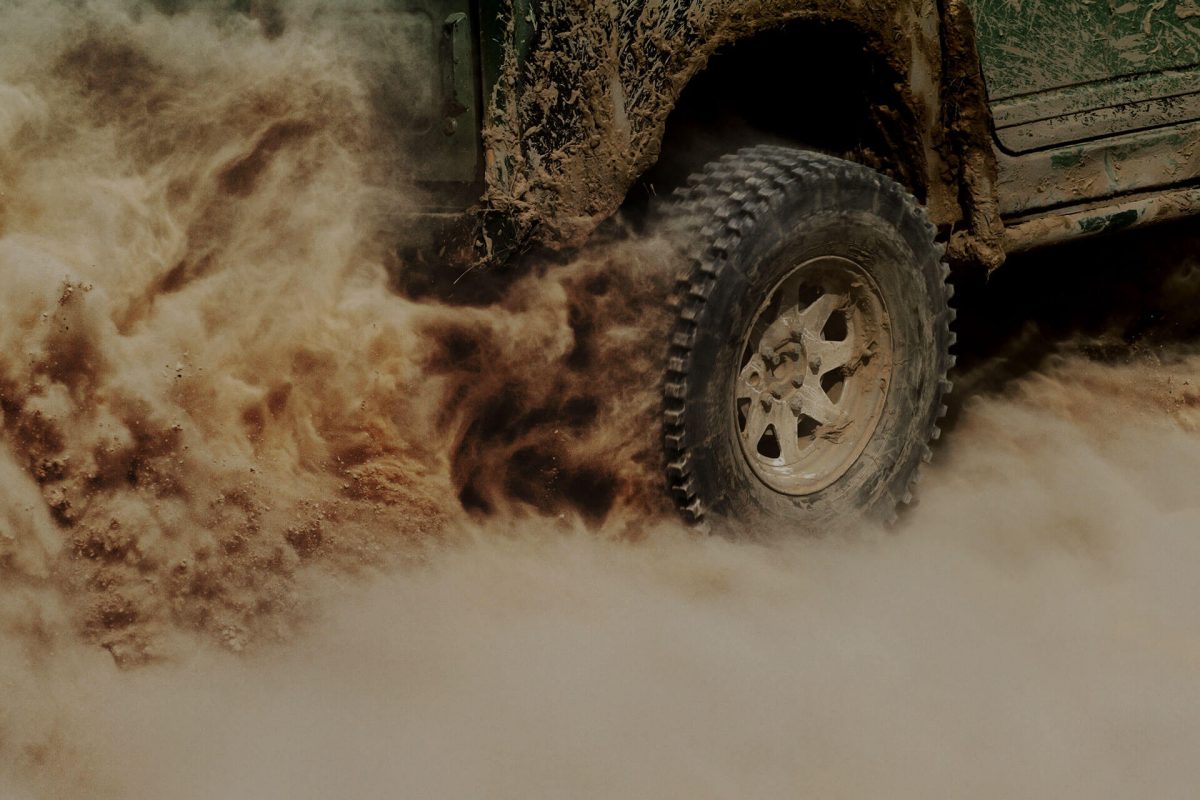Off-Roading: Tackle Any Terrain

August 2, 2020 Topic: How ToSafety TipsTech Talks
Nothing beats the feeling of exploring the landscape of this vast country with just a few tools and your trusted vehicle. The favorite American pastime we’re referring to is off-roading, and we’re going to help you travel the toughest terrains.
The most important elements of a successful off-roading adventure are safety and preparation. Before going anywhere, plan out your destinations and be prepared for whatever each situation may bring.
Get your vehicle serviced before embarking
Make sure your tires, brakes and everything under the hood are in perfect working condition. Ensure that you have a full tank of gas, extra fluids and oils, tow rope rated heavy enough for your vehicle, spare tires and everything to change the tire, a portable air compressor, navigational aids like a GPS, a portable cell phone charger, and a first aid kit.
Other Recommended Tools
- High lift jack
- Vehicle mounted winch
- Shovel
- Spare Tanks of Water (for radiator) & fuel
- Two-way radios for communication
- Fire extinguishers
- Vehicle roll bar
Different Types of Terrain
Through the Hills
Hill-driving can fool even the most experienced of drivers, which makes it a more advanced level of off-road driving. If a hill is too steep, or you have doubts about your vehicle’s ability to climb it, do not attempt. Keep all tires on the ground and advance slowly. When descending from hills, put your car into a low or neutral gear, easing the strain of the descent on your vehicle. Know your angles and avoid driving on the sides of hills, as vehicle-tipping is a possible danger.
Rocky Roads
Use low range 4 wheel drive and the lowest gear when driving on stony surfaces. Do not straddle rocks, this can do serious damage to the undercarriage of your car. Instead, align the boulders with the path of your tires. Approach rocks and boulders slowly, and try to keep your vehicle level when traversing through rocky ruts.
On the Dunes
This is an intermediate level of off-roading, as sand presents many challenges as a driving surface. Ever-changing and unpredictable, sand can throw off the less-experienced off-roading driver.
Equipment Needed: Shovel, Air Compressor, Tire Gauge
For beach and sand driving, you must first have a 4 Wheel Drive vehicle; front wheel drive will dig you into a sand hole. Gaining traction is difficult on sand, so most drivers will deflate their tire pressure to 15-20psi, which allows the tire tread to spread out and grip more sand surface. Momentum is key when driving on loose terrain, so try not to slow down unless absolutely necessary. If you feel you’re becoming stuck, turn the wheel left and right repeatedly to allow the tires to grip fresh sand and gain better traction. You can also wet the sand to condense it, or simply try backing out of the hole. Avoid turning sharply, since tires turning through sand take much more energy than when driving straight. Before returning to the road, use your air compressor to reinflate your tires, as low tire pressure on concrete surfaces can be very dangerous.
In the Mud
Mud-driving is an intermediate endeavor; mud is an unpredictable, unforgiving driving surface. Sludge tends to make vehicles slide, forfeiting your control.
Equipment Needed: 4 Wheel Drive, All-Terrain or Mud Terrain Tires
Before entering, analyze how deep the mud is by dipping a stick into the quagmire, and scan for any hidden obstacles. If you don’t see tire tracks on the opposite side of the mud you are assessing, think again before continuing. Keep a cool head when tackling muck and maintain your forward momentum, if possible. If you feel you are becoming stuck, try backing out slowly. Never spin your tires, as this will entrench you even more. If backing out isn’t possible, try placing sticks, rocks and dry natural material under the stuck tires, to help you gain traction.
Crossing Streams
Be extremely cautious when traversing across waterways. The power of moving water can be deceiving, even if it is clear. Avoid muddy moving water, as this may indicate dangerous, roiling currents below the surface. If you don’t know how deep the water is, do not cross. Water up to the axles is generally fine, as long as the current isn’t moving too fast. Water at bumper-level should be approached cautiously, just remember to check your air intake. If the water is up to your headlights, unbuckle your seatbelts and open the windows for an easy escape, if necessary. If driving through deep water, avoid getting the sparkplug wet. If you stall in the water, do not attempt to start the engine because water can enter the air intake, damaging your vehicle.
As off-roading puts you in direct contact with nature, it is important to remember to carry survival gear with you at all times, since it can throw you into unexpected outcomes. Always tell someone where you will be going, and when you expect to be back. Mother Nature can change a situation abruptly, so it is critical to know that your group can be found in the event of an emergency. Reduce your impact on the land by respecting the natural environments you are foraying into. Avoid animal habitats, trees, and protected wildlife enclosures, and always remembering to dispose of your litter in the proper receptacles.
As you consider setting out on an off-roading adventure this summer, remember that nothing is more important than safety, preparation, respecting nature and wildlife, and adhering to local and national off-roading laws. Know your limits, as well as the limits of your vehicle, and do not attempt anything that you have not prepared for. Keep these tips in mind on your trip and remember, have fun!
